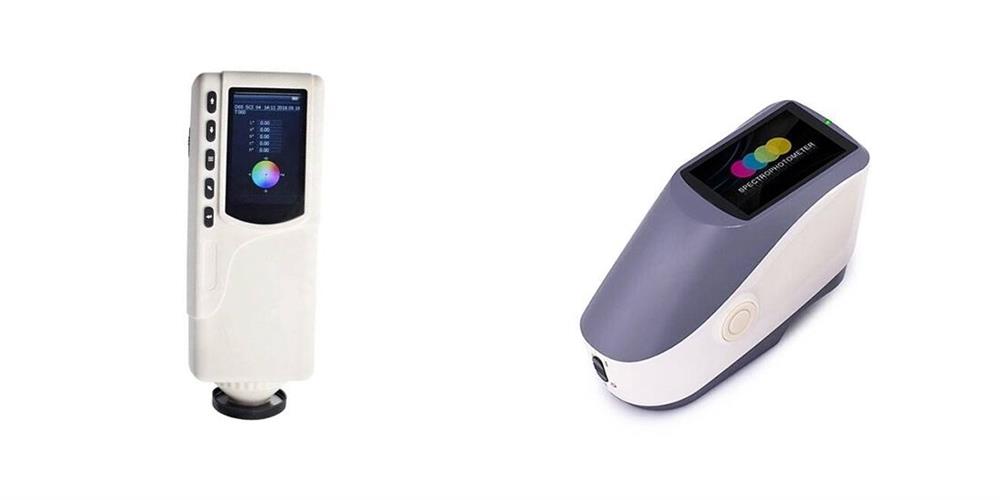Colorimeter vs. Spectrophotometer
Colors surround us all the time and affect our emotions, behaviors and beliefs in conscious or unconscious ways. Colors can set emotions, warn us of danger, give us important information, and even bring us joy. Despite its ubiquity, description of color remains elusive, in part because different people perceive color differently, and because of the lack of description for each of the millions of colors the human eye can see.
Instrumental color measurement transcends the limitations of human perception and vocabulary, enabling us to capture color information as objective data, creating a common color language that is essential for communication within and between industries around the world. Two of the most advanced types of color measurement instruments are colorimeters and spectrophotometers, both of which use sophisticated technology to precisely quantify and define color. In this article, we will introduce the differences between colorimeter and spectrophotometer.

Definition:
A color meter is designed to perform a type of psychophysical sample analysis, which means its measurements correlate to human perception. In other words, it is designed to see color the way we do.
A spectrophotometer is an instrument used for full spectrum colorimetric analysis of physical samples. Spectral analysis of the wavelengths of the reflectance and absorbance of the sample can produce precise data beyond what the human eye can observe. Color spectrophotometer can also be used to calculate psychophysical colorimetric information if desired.
Working Principle:
The use of handheld color meter is usually based on the Beer-Lambert law. This law tells us that the concentration of a solute is proportional to its absorbance. A colorimeter starts with a simple light source. With the help of the lens, the light beam becomes a single and focused wavelength and then passes through the sample solution. On the other side of the solution is a photocell detector that determines how much wavelength of light is absorbed. The detector is connected to the processor and digital display, providing a readable output of the results.
The basic layout of a portable spectrophotometer is similar to that of a colorimeter, but with more steps and variations. The light source projects the light source onto the object through a prism or filter. The tool used will isolate only one wavelength band to hit the sample. The sensor then detects the light that is not absorbed by the object and passes the data to a processor or computer with the appropriate software.
Application:
Precision colorimeter can be used in a variety of industries and environments. Small portable devices can be used to analyze color contrast and brightness on a TV or computer screen, and the user can then adjust the Settings to get an excellent quality image. In printing industry, colorimeter is the basic element of color management system. Other printing industry applications include checking the electronic components and quality of pulp paper and measuring the quality of printing inks.
Spectrophotometer is one of the use of material identification, mainly used to measure the unknown or known material to the visible light absorbance, and quantitative analysis at the same time. Spectrophotometer can also be measured by the material and standard matter and standard chromatogram analysis. Spectrophotometers are often used when testing the purity of substances.

